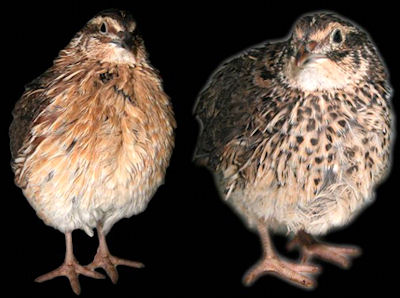2009-08-22

Japanese quail are an excellent model for studies on sexual behaviour. They very quickly learn to approach quails of the opposite sex when being reinforced with access to copulation. Previous studies had shown that quails tested with their left eye performed better than the ones tested with their right eye when working for sex. This right hemispheric dominance for instinctual and affective behaviour is typical for vertebrates, incl. humans. Now scientists from the Bochum Biopsychology lab and two universities in Izmir (Turkey) aimed to see if this hemispheric dominance can be modified by asymmetrical light input in early life. To this end they closed the right or the left eyes of the 2 day-old quail for 70 days and tested the subjects in the same set up. Indeed, asymmetry of behaviour had disappeared. Thus, brain asymmetries can be altered with asymmetrical sensory stimulation in early life. However, the scientist were up for a surprise when they removed the eye cap from the closed eye, switched its position to the previously open eye and retested the birds. Suddenly, the old right hemispheric dominancy emerged again. So, the old left-right differences had survived in the deprived hemisphere, showing that lateralized circuits are retained to some extent, even after major changes on the undeprived side.

Japanese quail are an excellent model for studies on sexual behaviour. They very quickly learn to approach quails of the opposite sex when being reinforced with access to copulation. Previous studies had shown that quails tested with their left eye performed better than the ones tested with their right eye when working for sex. This right hemispheric dominance for instinctual and affective behaviour is typical for vertebrates, incl. humans. Now scientists from the Bochum Biopsychology lab and two universities in Izmir (Turkey) aimed to see if this hemispheric dominance can be modified by asymmetrical light input in early life. To this end they closed the right or the left eyes of the 2 day-old quail for 70 days and tested the subjects in the same set up. Indeed, asymmetry of behaviour had disappeared. Thus, brain asymmetries can be altered with asymmetrical sensory stimulation in early life. However, the scientist were up for a surprise when they removed the eye cap from the closed eye, switched its position to the previously open eye and retested the birds. Suddenly, the old right hemispheric dominancy emerged again. So, the old left-right differences had survived in the deprived hemisphere, showing that lateralized circuits are retained to some extent, even after major changes on the undeprived side.